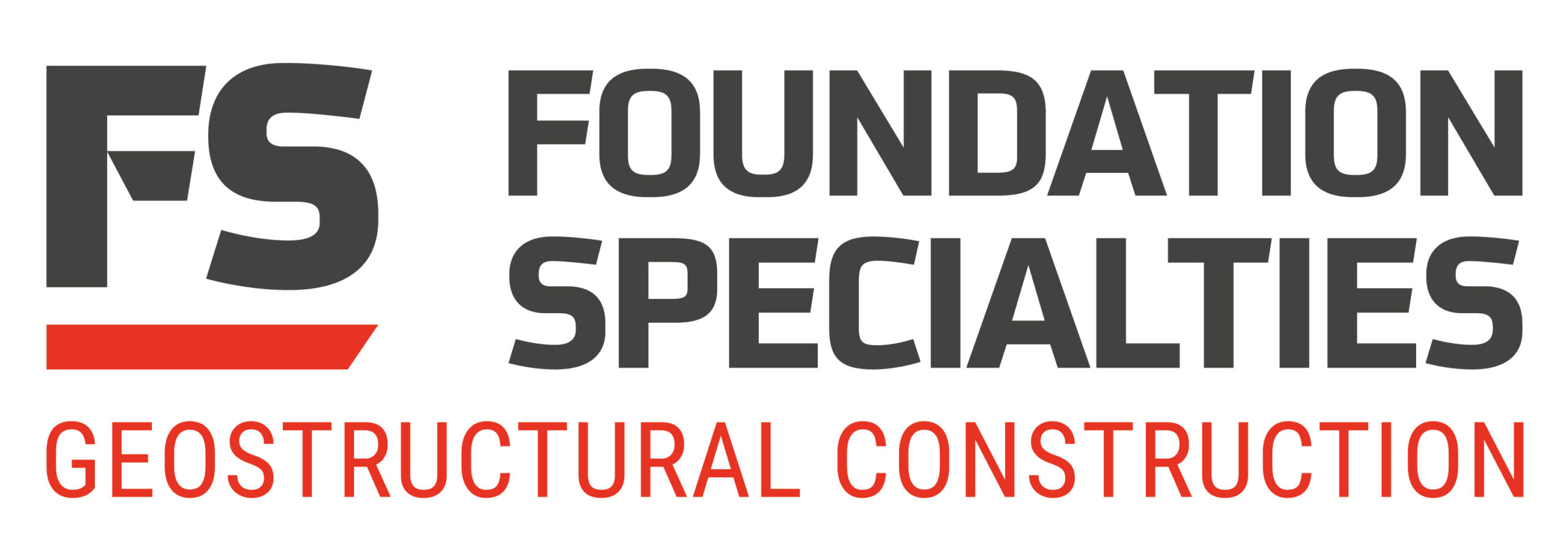By Scarlett Peregoy with GEOCMO. Originally posted on ncfigeo.com.
Project Overview
The WOKA Whitewater Park, located in the scenic Ozark Mountains, features a 1,200-foot-long and 100-foot-wide channel with eight drop features and was designed to provide an exceptional experience for whitewater enthusiasts. However, during construction, water leaks through cracks and voids in the limestone bedrock posed a significant challenge, requiring innovative solutions to ensure the project’s success. Through creative geotechnical methods, Foundation Specialties Geostructural Construction (FSGC) addressed these obstacles and delivered a stable foundation for this national-caliber whitewater park near the Arkansas-Oklahoma border.
Problem
Constructing the whitewater park along a river presented unique challenges, particularly in managing water intrusion and ensuring the stability of structural elements. During the excavation of the whitewater channel, significant water flow was encountered through cracks and voids in the limestone bedrock. Despite an extensive sheet pile wall built to protect the area from high water levels, an unexpected flooding event in April 2021 submerged the construction site, further complicating efforts to maintain a dry work environment and secure foundational stability.
Solution
To address these challenges, FSGC implemented multiple geostructural solutions:
- Rock Anchors: FSGC installed over 5,000 rock anchors (grouted anchors) along the 1,200- foot channel to reinforce water features and sidewalks. Each anchor, drilled to three-inch diameter holes with an average depth of five feet, was filled with reinforced anchor bars and US SPEC RA Grout. The grout component was particularly effective in stabilizing the rock anchor points and enhancing the overall stability of the installation. By integrating grout with the anchoring system, the project ensured a secure foundation capable of withstanding intense river flows and heavy usage.
- Polyurethane Injection Grouting with NCFI Geotechnical Polyurethanes: To combat water flowing from the river through limestone fractures into the excavation area, FSGC applied NCFI’s TERRA-LOKTM 24-120 foam to create an effective water cutoff. The polyurethane was injected into limestone crevices, forming a barrier that successfully prevented underground water intrusion. This solution allowed construction to proceed smoothly, eliminating the need for continuous water pumping and avoiding delays.
- Sheet Piling and Cofferdam Construction: To protect against high river levels, FSGC constructed a 1,000-foot-long sheet pile wall, ranging from 4 to 10 feet in height. Additionally, for dam repairs, engineers designed a downstream cofferdam using an O-Pile combi-wall system—a combination of large-diameter pipe piles and sheet piles providing enhanced load-bearing capacity and cost-efficiency.
Solution
The application of polyurethane and US SPEC RA Grout played a critical role in addressing the water intrusion and stability challenges at WOKA Whitewater Park. By sealing fractures and voids in the limestone bedrock, the polyurethane formed a reliable barrier that controlled groundwater and river infiltration at the construction site. This solution reduced the need for ongoing water management efforts, contributing to the stability of the excavation area and the integrity of the park’s foundations.
Combined with the anchoring systems, the grout enhanced the infrastructure’s durability, ensuring it could endure the demands of river flow and regular use. NCFI’s TERRA-LOKTM 24-120 fo am provided an adaptable and efficient solution for this complex geotechnical project, helping the construction team achieve their goals. Today, WOKA Whitewater Park benefits from a solid foundation and a resilient infrastructure, supporting its continued use as a premier destination for whitewater activities.

